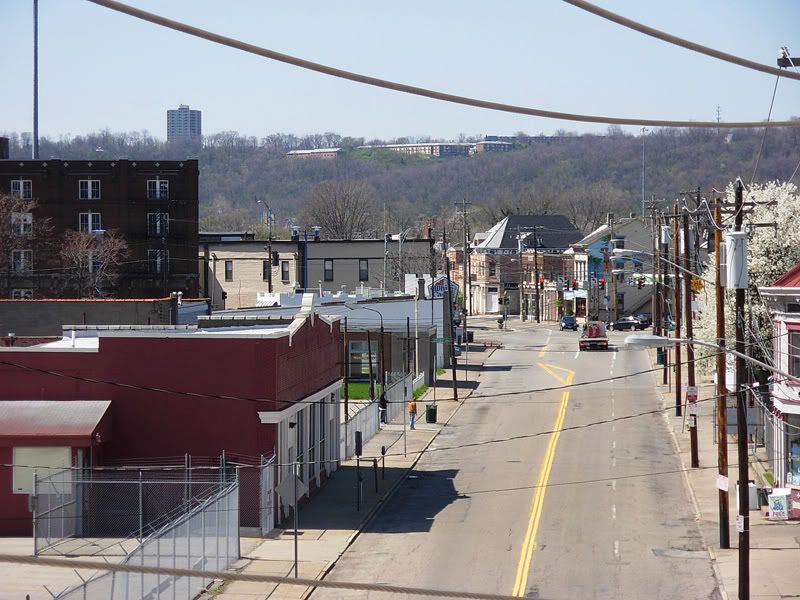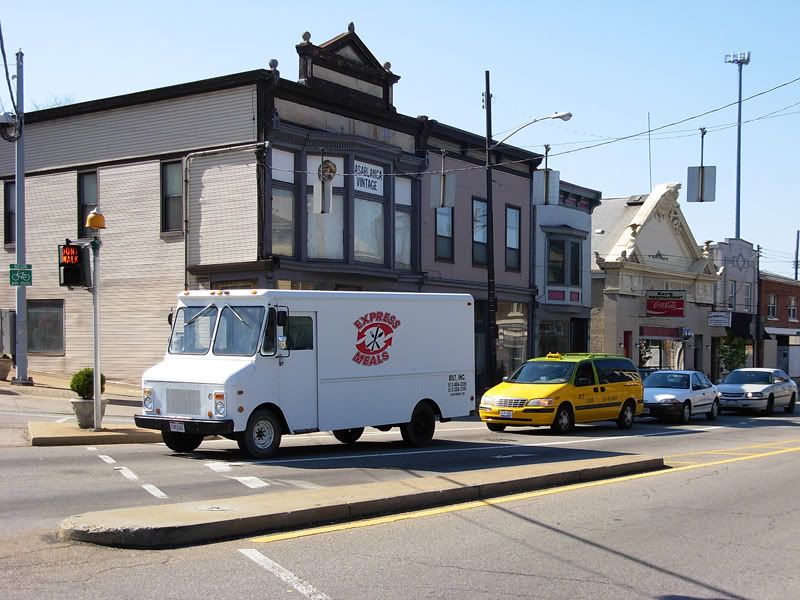 Earlier this month, Cincinnati city manager Milton Dohoney Jr. reported in a memo to City council that a "one size fits all" approach to adding dedicated bicycle lanes to Spring Grove Avenue isn't workable, and the idea will require more study as part of the Cincinnati Bike Plan planning process.
Earlier this month, Cincinnati city manager Milton Dohoney Jr. reported in a memo to City council that a "one size fits all" approach to adding dedicated bicycle lanes to Spring Grove Avenue isn't workable, and the idea will require more study as part of the Cincinnati Bike Plan planning process.
The report was in response to a March 16 motion introduced by councilmember Greg Harris that the City should include a bicycle connection between Spring Grove Village and Downtown as part of a Department of Transportation and Engineering (DOTE) project to improve safety and aesthetics along the roadway between Winton Road and W Mitchell Avenue.
The project, currently out for bid and scheduled to begin later this year, would address specifically the intersection of Spring Grove Avenue and Winton Road, which has the highest number of traffic accidents in the City.
It would also address infrastructure needs by installing approximately 6,000 square feet of rain gardens, 78 new street trees, and three new water mains, resulting in the removal of over 18,000 square feet of paved surface and the reduction of rainwater overflows into the storm sewer and nearby Mill Creek.
Continuity and consistency are key
As a principal arterial and alternate route to I-75 that carries between 17,000 and 33,000 vehicles per day within its various segments, Spring Grove Avenue is likely to be identified in the Cincinnati Bike Plan as one of the most important bicycle corridors in the City.
But Dohoney cautions that the City will need to evaluate segments of the roadway individually based on factors such as right-of-way widths, traffic volumes, accident records, driveways and access, and adjacent land uses.
"Due to the significant variances of these factors, the Administration expects that several types of bicycle facilities will be recommended in order to create a safe, continuous corridor for bicycles," Dohoney says. "It is also important that these considerations be balanced with the need to provide a level of consistency and continuity for the bike facilities along the corridor. Facilities need to be consistent and clearly understood by the cyclists and motorists along the corridor from St. Bernard to Downtown."
The project area
DOTE originally studied the inclusion of dedicated bike lanes during the design phase of the project, but found potential conflicts with dual left- and right-turn lanes at Clifton Avenue and at Winton Road.
"It was thought that bike lanes are not the most appropriate facility to accommodate cyclists for this particular segment of Spring Grove Avenue," Dohoney says. "Similarly, side paths were considered to be less than desirable due to the number of driveways and the safety concerns they present. At the time, the planned adjacent Mill Creek Trail was also thought to provide a safer alternative for cyclists through this segment of the corridor."
Preliminary studies showed other problems as well.
"Inclusion of bike lanes will require the removal of on-street parking between Winton and Clifton and will also require the loss of five feet of green space and rain garden from each side of the roadway, thus reducing the stormwater benefits of the project," Dohoney says. And as one traverses Spring Grove Avenue southbound to Northside, one encounters narrower roads, more on-street parking, and heavier bus traffic.
And as one traverses Spring Grove Avenue southbound to Northside, one encounters narrower roads, more on-street parking, and heavier bus traffic.
Heavy truck parking and traffic presents problems through Camp Washington and multiple left-turn lanes appear closer to Queensgate, Dohoney says.
Funding could be lost
The addition of dedicated bike lanes could also postpone the project bidding process, require a complete redesign, and hinder plans to replace three water mains, which could cause the City to lose $2.8 million in Ohio Public Works Commission (OPWC) funding if the project isn't under contract by October.
Missing out on the contract could even damage future OPWC requests, Dohoney says.
"The City often uses these OPWC funds for our local matching funds to federal funding sources, including Surface Transportation Program funds, and loss of these funding opportunities would restrict DOTE’s abilities to leverage and maximize other funding sources for City projects," he says. Temporary solutions
Temporary solutions
Even with all of these issues, Dohoney says that the City's committed to making Spring Grove Avenue an important link for cyclists to travel between the City's neighborhoods.
"DOTE believes it is imperative that bicycles be accommodated along the Spring Grove corridor," he says.
Dohoney recommends a series of signs, sharrows, and guide markings along the route as a temporary, low-cost safety measure.
"The Administration also recommends that the corridor be studied in depth and options vetted through the Bike Plan public participation process, and that a series of stakeholder group recommendations be presented to Council before the completion of the Cincinnati Bike Plan," he says.
Construction of the Spring Grove Avenue improvement project is scheduled for completion in 2010.
Clifton survey
DOTE also is launching a sharrows pilot project along Ludlow and Jefferson avenues in Clifton, and has put together a short, five-question survey to gauge the baseline skills and knowledge of resident cyclists and non-cyclists.
Photo credit (sharrow photo): "Sharrow Panda" by richardmasoner, courtesy of Flickr.
Previous reading on BC:
OKI bike plan updated, Cincinnati's moving forward (5/5/09)
Cyclists to advocate for safety, input (10/22/08)
Thursday, May 14, 2009
Dohoney: Spring Grove bike lanes need more study
Posted by
Kevin LeMaster
at
5:10 AM
![]()









